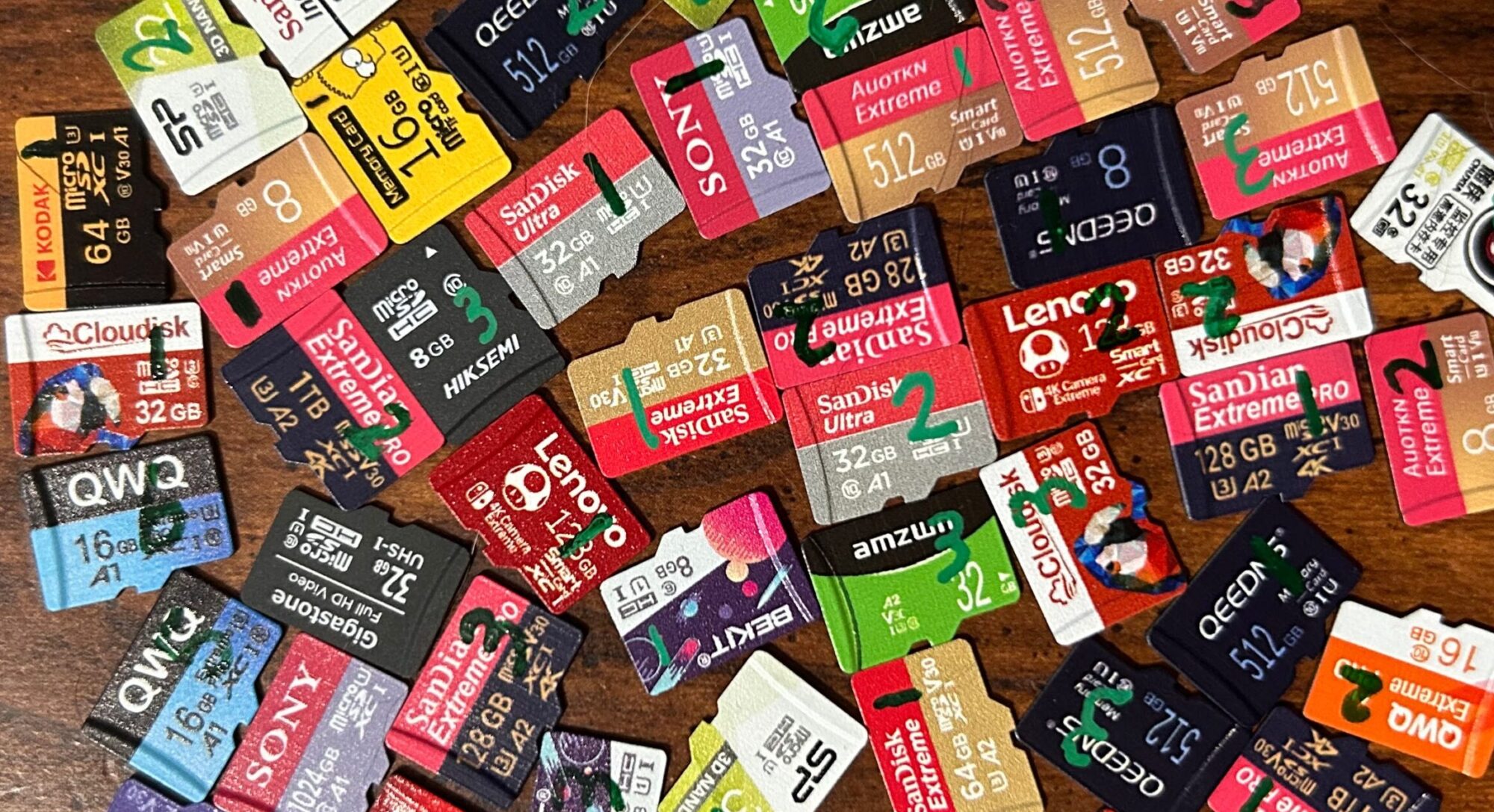Auotkn is a brand that came up frequently while browsing through microSD cards on AliExpress. The visual design is almost identical to that used by SanDisk’s Extreme cards — to the point where a casual observer from 10 feet away likely wouldn’t notice the difference. Nevertheless, I didn’t label these as knock-offs — just off-brand cards.
I was also curious to see whether there were brands that were selling both authentic flash and fake flash under the same brand name, so I purchased the 8GB version and the 512GB version of this card. And, as it turns out, there are: this card was authentic, while the 512GB was fake.
These cards failed the criteria that I set out for name brand cards for a few reasons:
- The cards came in retail packaging, but the packaging didn’t identify the vendor who was selling the card.
- As far as I can tell, Auotkn doesn’t sell more than just microSD cards.
- As far as I can tell, Auotkn doesn’t have a website.
- These cards weren’t fake flash, but the 512GB version is.
- These cards’ CID registers bore signs that the vendor had attempted to conceal the card’s true origin — specifically:
- One card had its manufacturer ID was set to hex
00and its OEM ID set to hex0000. - The other two cards had their manufacturer ID set to hex
00and their OEM ID set to hex3432.
- One card had its manufacturer ID was set to hex
These cards technically don’t meet the criteria for knockoffs either. The closest they get is using visual elements from a well-known name brand — specifically, the red and yellow banding used by the SanDisk Extreme’s — but that criteria referred specifically to the brand’s logo, and the red/yellow banding isn’t part of SanDisk’s logo — just the color scheme they use for their Extreme cards. So…these cards are going to get lumped into the off-brand category.
I initially found it curious that the first two cards displayed such wildly different results on the performance test. It wasn’t until I compared the CID data between the two — which, admittedly, I didn’t do until I was writing this up — that I noticed that they are completely different. Initially I thought that maybe I got the CID data mixed up with one of my other cards — after all, card #1 shared the same manufacturer ID, OEM ID, product name, and product revision as the QEEDNS 8GB cards, and sample #2 shared the same values as the Cloudisk and Bekit cards — but after rechecking the data, it appears that I recorded it correctly the first time. This points to the conclusion that Auotkn may be in the middle of switching manufacturers. Or that they source their cards from multiple manufacturers. Or that they’re reselling used cards. Or that these cards came from different batches. On second thought, maybe this doesn’t point to any conclusion in particular.
Performance on these cards was pretty poor, with all performance metrics coming in below the 31st percentile. (And even that was an anomaly — the sequential read score for sample #2 came in at about 68MB/sec, while the other two samples came in closer to 18MB/sec.)
On the endurance testing front: as a whole, these cards actually did above average:
Sample #1’s first true1 error was a two-sector wide corrupted data error during round 3,013. It survived 4,772 read/write cycles; during round 4,773, the number of failed sectors exceeded the 50% threshold. Here’s a graph of what this sample’s progression looked like:
Sample #2’s first error was a 1,668-sector wide corrupted data error during round 5,450. It survived 26,041 read/write cycles; during round 26,042, the number of failed sectors exceeded the 50% threshold. Here’s a graph of what this sample’s progression looked like:
Sample #3’s first error was an eight-sector wide address decoding error during round 11,822. It was the third card in my collection to survive 10,000 read/write cycles (after sample #1 of the Hiksemi NEO 8GB and sample #3 of the Bekit 8GB). Like the other two, the number of failed sectors only increased as time went on; it finally reached the 50% failure threshold during round 20,961. Here’s the graph for this sample:
Overall? While these cards have done well on endurance tests, the tradeoff is speed — they performed terribly on all of their performance metrics. Additionally, the fact that this brand also makes fake flash does not inspire confidence. My advice is: don’t buy them. There are much better cards out there.
1Sample #1 experienced a failure during round 2,854, but this was due to problems with my code that handles disconnects/reconnects; as such, I chose to ignore it and not consider it to be this card’s first error.
September 25, 2025

